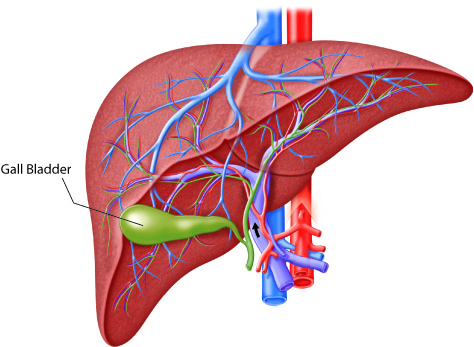Gallbladder removal surgery is also known as a cholecystectomy, a procedure that removes the gallbladder entirely. This small, pear-shaped organ is located beneath the liver. A removal surgery is most often performed to treat gallstones and the complications they cause. Understanding how your body adapts after the procedure can help manage expectations for recovery and long-term digestive health. Here’s information on cholecystectomies and how they affect digestion:
What Does the Gallbladder Do?
The primary function of the gallbladder is to store and concentrate bile, a digestive fluid produced by the liver. Bile is fundamental for the digestion of fats. When you eat a meal, especially one containing fats, oils, and lipids, the gallbladder contracts and releases a concentrated amount of bile into the small intestine.
Bile Adaptations After a Cholecystectomy
Once in the small intestine, bile acts like a detergent, breaking down large fat globules into smaller droplets. This process, called emulsification, increases the surface area of the fats, allowing digestive enzymes to break them down more efficiently. Without this step, the body would struggle to digest fatty foods and absorb fat-soluble vitamins.
Diet Adjustments After a Cholecystectomy
Following a cholecystectomy, adopting a balanced and gentle diet can help support your digestive system as it adapts. Focus on incorporating foods that are low in fat and easy to digest. Try eating more lean proteins, like:
- Chicken
- Turkey
- Fish
- Tofu
- Legumes
To add more fiber to your diet, include more whole grains like oatmeal, brown rice, and quinoa. Non-starchy vegetables like leafy greens, carrots, zucchini, and bell peppers are nutrient-rich options that can be easier on the stomach. Avoid foods that are greasy, fried, or heavily processed, as they may trigger discomfort. Gradually introducing healthy fats, like those found in avocados, olive oil, and nuts, in moderation can help your body adjust.
How Does the Body Redirect Bile?
After a gallbladder removal, the liver continues to produce bile, but it can no longer be stored and concentrated. The bile instead drips continuously from the liver directly into the small intestine through the common bile duct. This means that instead of receiving a large, concentrated release of bile in response to a fatty meal, the small intestine receives a steady, less concentrated flow.
The body adapts to this new system over time. For most individuals, the constant trickle of bile is sufficient to aid in the digestion of moderate amounts of fat. The digestive system learns to function efficiently without the gallbladder’s storage capacity.
How Does the Body Absorb Nutrients?
After a cholecystectomy, the change in bile delivery can affect how the body processes certain nutrients, particularly fats and fat-soluble vitamins (A, D, E, and K). Because bile is less concentrated and is not released in a large surge, the digestion of a high-fat meal can be less efficient immediately following surgery. Especially after eating fatty or greasy foods, some individuals may experience digestive symptoms like:
- Diarrhea
- Gas
- Bloating
These symptoms often improve as the body adjusts. The digestive tract adapts to the continuous flow of bile, and for many people, nutrient absorption returns to a near-normal state. Consuming smaller, more frequent meals and avoiding large quantities of high-fat foods can help facilitate a smooth transition. The body compensates, and the small intestine becomes more adept at absorbing nutrients with the available bile over time.
Learn More About Gallbladder Removal
A cholecystectomy is a common procedure that allows the body to adapt and maintain digestive function. While some adjustments may be necessary, especially regarding diet, most people can return to their normal activities and diet without long-term complications. If you have questions or concerns about gallbladder health or the surgical procedure, contact a medical specialist today.

